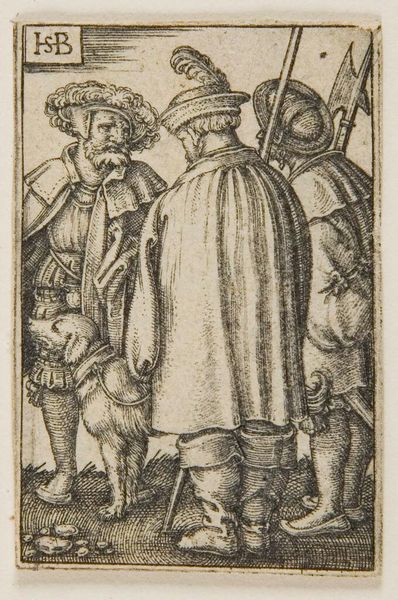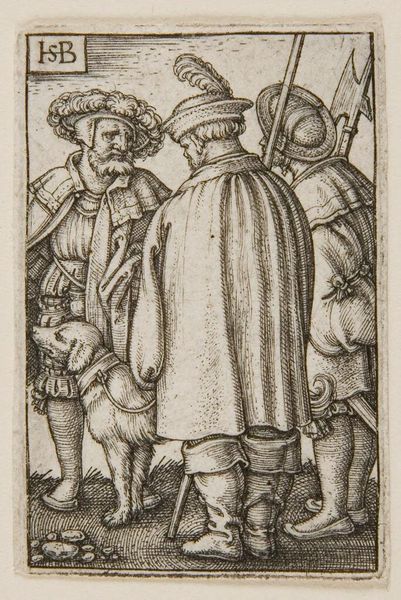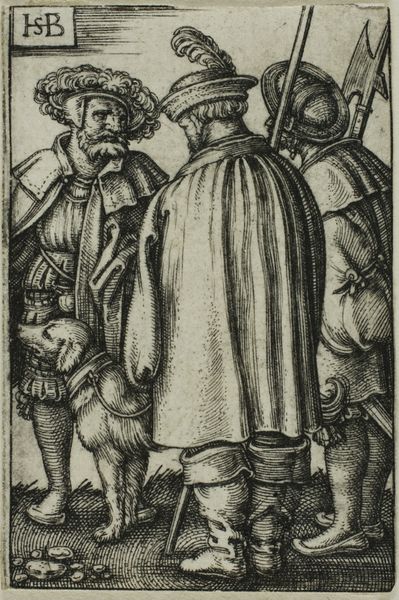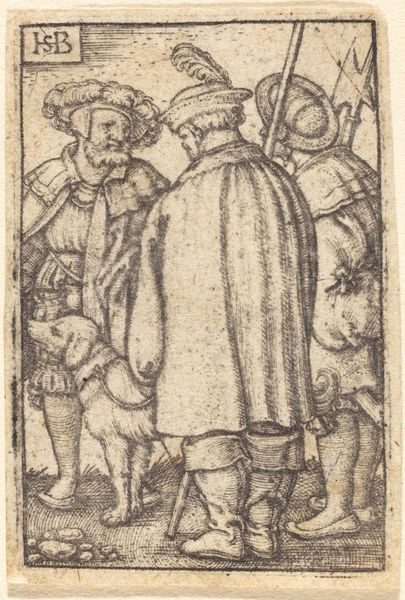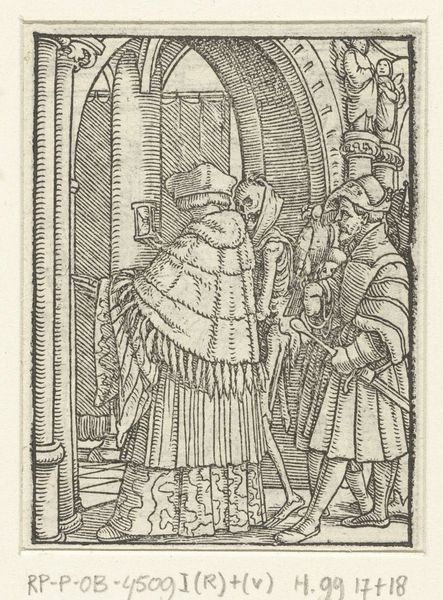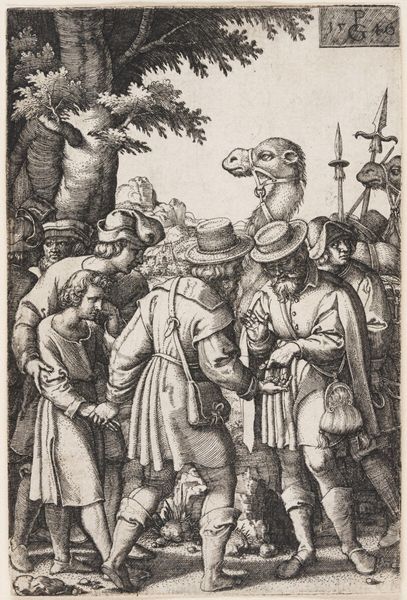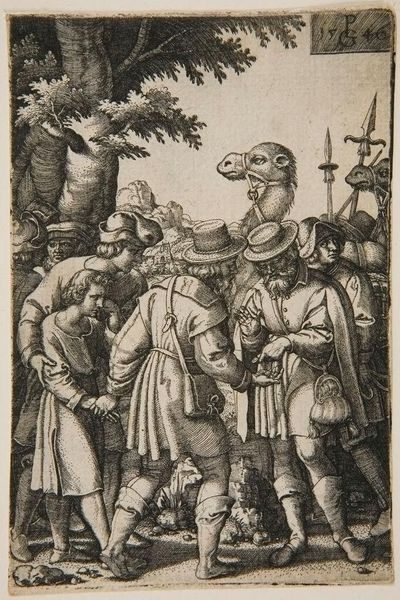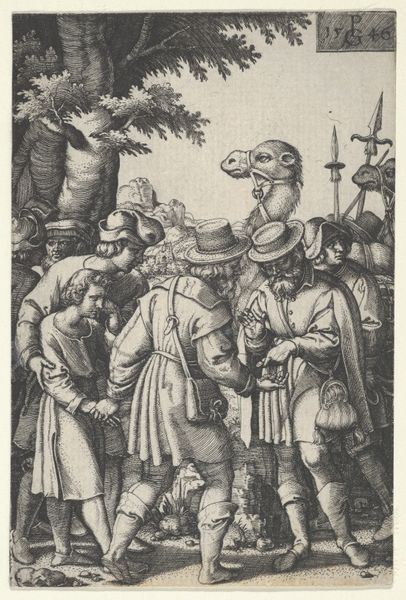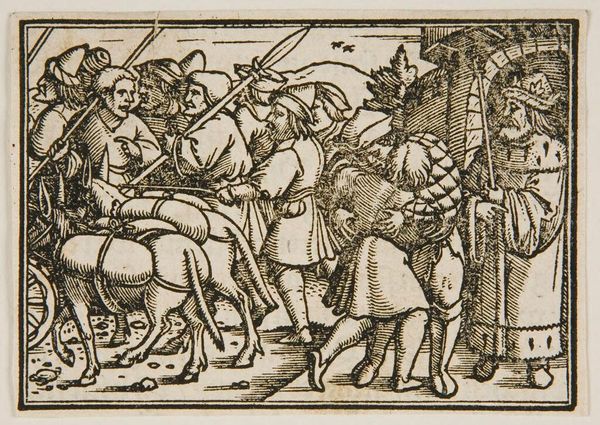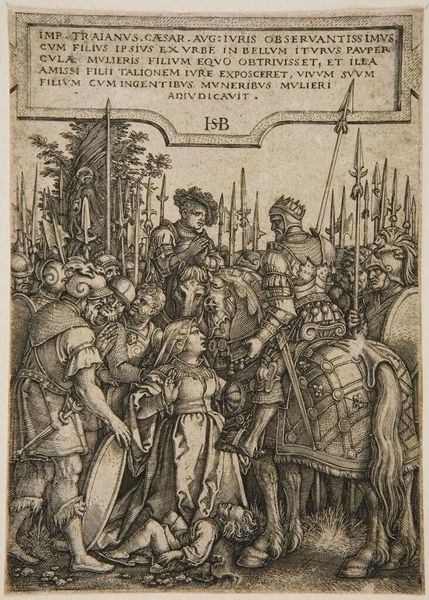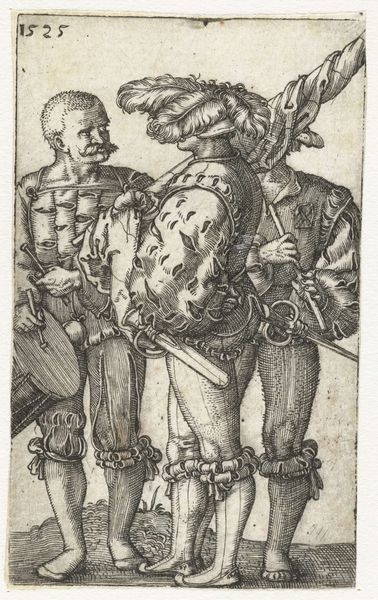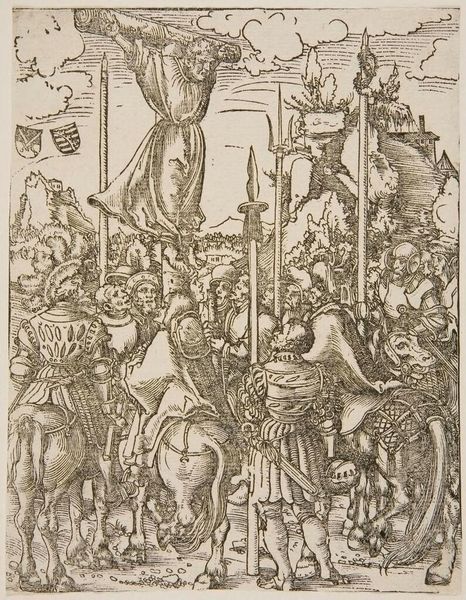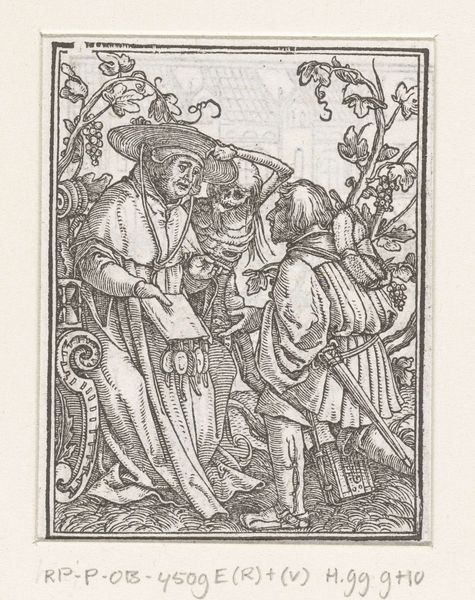
Dimensions: height 46 mm, width 30 mm
Copyright: Rijks Museum: Open Domain
Editor: This etching, “Three Soldiers with a Dog” by Sebald Beham, from somewhere between 1510 and 1550, depicts, well, three soldiers and a dog. It’s really detailed, almost like a carefully rendered sketch. How do you interpret this work, considering the historical context? Curator: What strikes me is how it presents a vision of military life. Not the glorious battle scene we often see, but a glimpse into the everyday. Soldiers at ease, accompanied by a dog – likely a working animal or even a companion. It hints at the socio-political role these figures played within the community and raises questions about the printing press shaping early European views about conflict. Does this piece reinforce or challenge your preconceived notions? Editor: I guess I hadn’t really thought about soldiers having down time like this back then. It feels a bit more human than, say, a portrait of a triumphant general. The presence of the dog is especially grounding. Curator: Exactly. These images, circulated widely, could be instrumental in constructing or challenging power structures, portraying a narrative for public consumption. Consider how this seemingly simple image reflects upon a rising sentiment towards the military during this period, subtly legitimizing and portraying its impact and acceptance to the populace. It almost humanizes war... What does it make you wonder? Editor: I’m curious if the inclusion of the dog could be related to loyalty to their commander. Curator: Precisely. Its inclusion and symbolism definitely enrich this work. I suppose it speaks volumes on the image's subtle function as a mode for spreading specific messages through society. It encourages questions of obedience, valor, duty, which leads us back to consider its overall political aim in history. Editor: This has helped me consider this piece as less a slice-of-life image, but something with more power behind it than I initially considered. Curator: And for me it is another step towards unravelling its meaning, reflecting the power structures of that time through art's complex relationship with society.
Comments
No comments
Be the first to comment and join the conversation on the ultimate creative platform.
